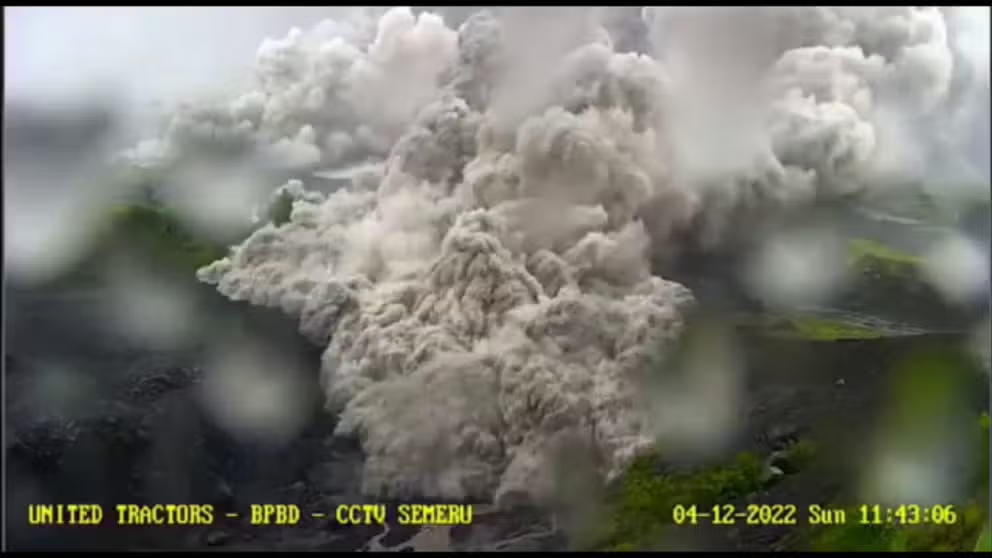Eruption of Indonesian volcano caught on satellite, webcams
Mount Semeru sent ash more than 3 miles into the atmosphere over Southeast Asia.
Eruption of Indonesian volcano caught on video
A large volcano on Indonesia’s East Java Province erupted Sunday, sending thousands fleeing and ash into the sky.
JAKARTA, Indonesia – Nearly one year since a deadly eruption devastated communities on Indonesia’s populous Java island, Mount Semeru erupted again, sending ash miles into the sky and forcing residents to seek shelter.
The eruption started Sunday, and cameras captured the moments gas and ash were blasted through the terrain of the tropical country.
NASA said its satellites also captured the eruption and the pyroclastic flow, which was likely composed of ash, soil and other debris that moved southeastward off the mountain.
Due to their ferocity, these flows can last for miles and destroy everything in their path.
The U.S. Geological Survey said temperatures of rocks and gas inside flows can reach upwards of 1,300 degrees and ignite fires.
The National Disaster Management Agency said nearly 2,000 people were evacuated from the region, and as of Tuesday, there were no reported facilities.
RESIDENTS FLEE AS INDONESIA’S MOUNT SEMERU VOLCANO ERUPTS
The agency said several farms, churches and other infrastructure in the immediate zone along the mountain’s slope were damaged.
The Center for Volcanology and Geological Hazard Mitigation urged people to stay at least 3 miles away from the summit during its latest period of heightened unrest.
Indonesia sits on one of the most active zones for volcanoes and earthquakes.
The USGS believes there are at least 75 active volcanoes on the islands that make up the archipelago.
Mount Semeru is no Mauna Loa
The eruption of Mount Semeru is occurring simultaneously with several other volcanoes around the world but is quite different due to its composition.
Mount Semeru is a composite volcano, which tends to be explosive and lead to devastating impacts.
Eruptions are similar to those seen on Mount St. Helens, Krakatoa, Mount Pinatubo and Hunga-Tonga-Hunga-Ha’apai.
Not included on the list is Hawaii’s Mauna Lao, which has been erupting since late November.
Mauna Lao is classified as a shield volcano and generally produces thin lava.
Its lava flow limits the explosive nature of eruption and usually ranks low on the USGS’ volcanic explosivity index (VEI).

Volcanic explosivity index (VEI)
(National Park Service)
The VEI ranks eruptions on a scale from 0 to 8, with values near zero considered to be small and non-explosive and higher values deemed to be apocalyptic.
HURRICANE INIKI 30 YEARS LATER: HOW A MONSTER STORM IN HAWAII IMPACTED FILMING OF JURASSIC PARK
Mauna Lao, unlike Mount Semeru, hasn’t forced any evacuations because the lava flow has remained in rural areas that surround the volcano.
Volcanologists are unsure of how long Mauna Lao will continue erupting but warn events can last several weeks.
Watch: Mauna Loa erupt in Hawaii
The world’s largest active shield volcano and has been erupting for around a week and shows no signs of slowing down.




